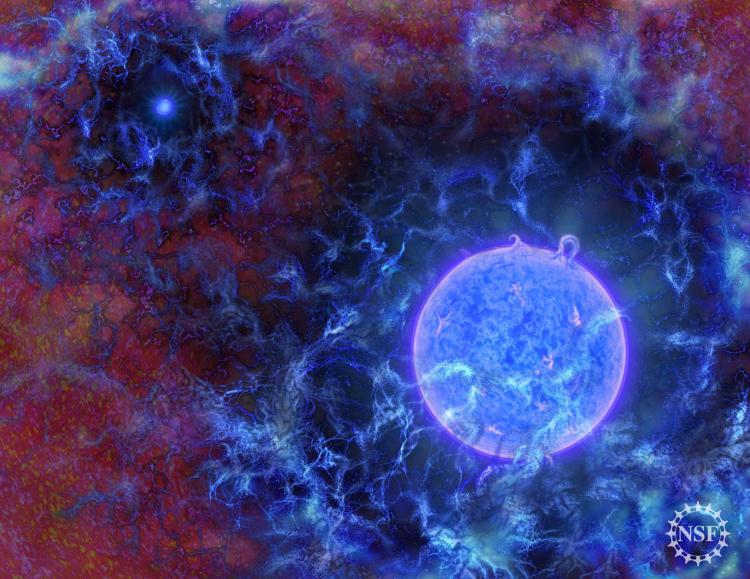Astronomers detect ancient signal from first stars in universe

This artist's rendering shows the universe's first, massive, blue stars embedded in gaseous filaments, with the cosmic microwave background just visible at the edges.Credit N.R.Fuller, National Science Foundation
For the first time, astronomers have detected a signal from stars emerging in the early universe. Using a radio antenna not much larger than a refrigerator, the researchers discovered that ancient suns were active within 180 million years of the Big Bang.
The astronomers, from Arizona State University (ASU), the Massachusetts Institute of Technology (MIT) and the University of Colorado Boulder, made the discovery with their Experiment to Detect the Global EoR (Epoch of Reionization) Signature (EDGES) project, funded by the National Science Foundation (NSF). They reported their findings in the March 1 issue of Nature.
"The EDGES experiment measures the tiny perturbation in the radio spectrum due to the appearance of the first stars and galaxies in the Universe,” said Raul Monsalve, a postdoctoral researcher at CU Boulder’s Network for Exploration and Space Science (NESS) and a co-author of the new study. “We have detected an absorption feature consistent with the formation of the first generations of stars 180 million years after the big bang."
Read the full story from the National Science Foundation.
[video:https://www.youtube.com/watch?v=wU6KXoO0NEE&feature=youtu.be]


